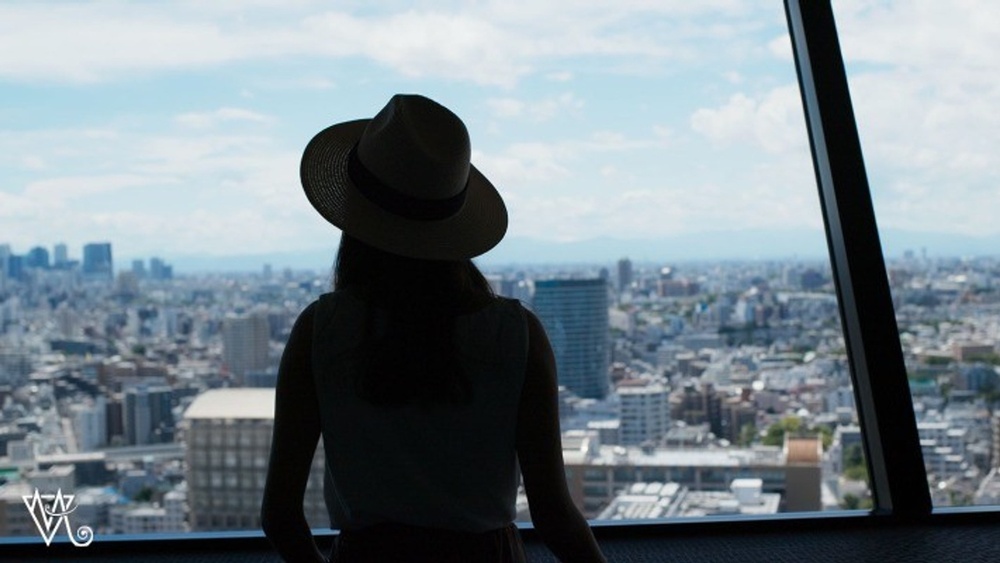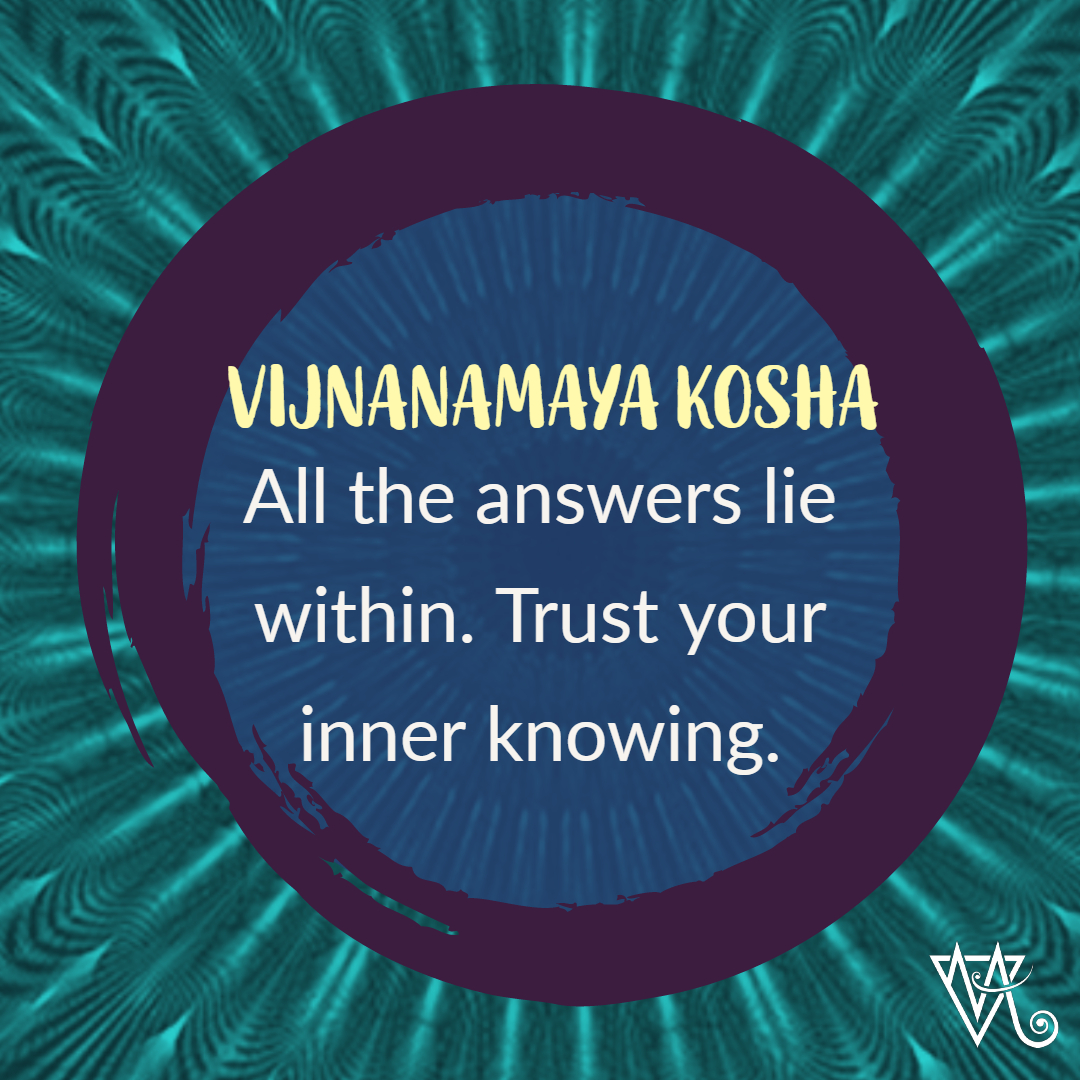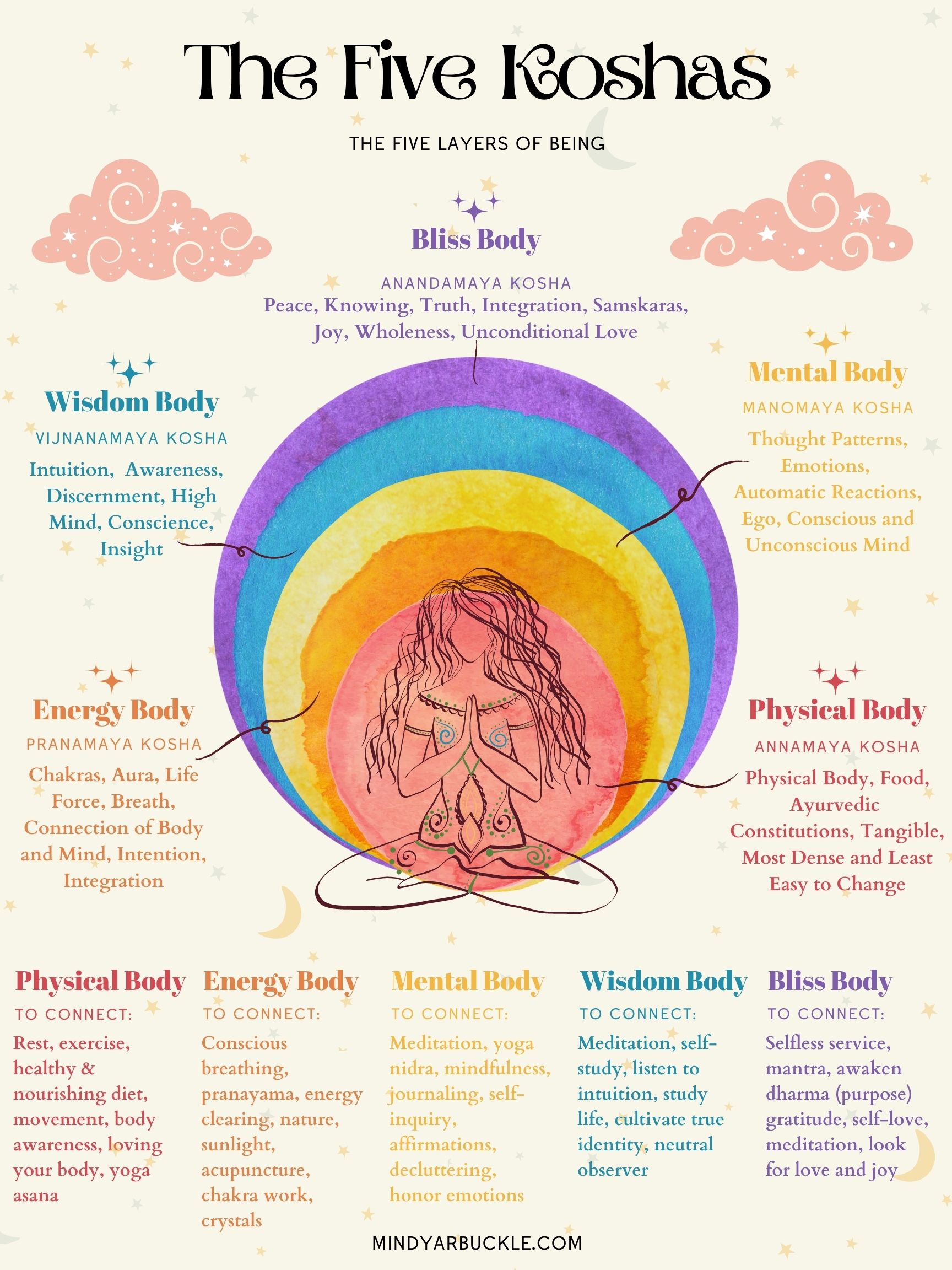Cultivating Wisdom and Observation through the Vijnanamaya Kosha
- Mindy Arbuckle SOULutions Coaching

In a world that has been ruled by fear for the last two years of a global pandemic, we are being called to lift ourselves out of the weight of the media and government and into a space of wisdom, love and peace. Yeah, that might sound impossible. But through the awareness of the vijñanamaya kośa it is absolutely possible. It is the wisdom body that helps us make sense of our experiences, both good and bad, so we can learn, grow and evolve.
A present moment experiment
Get comfy. Stretch your neck, shoulders, chest. Let your eyes relax and breathe deeply. As you do so repeat these words with each breath a few times:
I breathe in. I know I am breathing in.
I breathe out. I know I am breathing out.
I breathe in. I know I am breathing in.
I breathe out. I know I am breathing out.
I settle into my body and feel myself just as I am, in this moment and let go of comparing myself to who I was in the past, who I want to become and to other people.
I am me.
I am breathing.
Gently come back. How do you feel?
Better right?
Just imagine the power each of us holds when we take the time to tune in, observe and let go of that which no longer serves. Imagine if each and every person on the planet (or even just 10% of us) were doing this every day. What could be different? What kind of positive change would be possible?
Connecting to the Wisdom Body
The vijñanamaya kośa gives you access to your higher mind and the ability to discern wisdom from all life experiences. It connects you to your inner knowing and intuition. As the neutral observer it offers access to the pure witness consciousness that sees life clearly.
I think one of the best ways that we can cultivate our own inner awareness and our sense of becoming the neutral observer is to start with the breath. The breath can only happen in the present moment. In the now. This is what Patanjali states as atha (pronounced with an aspirated “t”, not a “th” sound as in English) in the first sutra of the Yoga Sutras.
What does it feel like to say that word a few times? Atha. Atha. Atha.
I find it to be like a tonic to my whole system. It brings me into the now where I can let go of the ties of the past and the anxiety of the future. Right now is the only time I have any sense of control over. I can relive in my mind all the things that have already happened, but I cannot change them. I can think about and plan for the future, but I can’t really do anything about it until it becomes the now, the present.
Cultivating observation lets me view my own world, my own creation from a place of neutrality instead of charge. It allows me to become aware of the ways in which the world pushes my buttons, what buttons I have, where my automatic reactions come from. There is so much of who we are that exists in our subconscious, some say up to 80-90%. What is under there and how do we access it? Through observing our lives and our minds. If we can see our patterns rising to the surface we have access to choice. We can choose if we like the way we have always reacted to certain experiences or if we would like to make a change.
Choosing Your Right Path
Honestly, that choice is always present. Always. We just don’t see that it is there. It’s like my four year old looking for the Lite Brite last night. It was right in front of her, yet, she looked right past it, all around it, and didn’t see that it was three feet in front of her eyes until I lovingly pointed it out.
Now, we don’t all have mother’s around that can point us to something right in front of us (actually, Divine Mother is always there for us). Instead, the job our vijñanamaya kośa does for us is access our higher minds in order to see that we have a choice and just what we need right in front of our eyes. (Refer back to __________ for an over view of the koshas.) The vijñanamaya kośa is the second layer which sheathes the true self. It correlates to our discernment and being able to learn from this world.
“It has two faces: one looks outward through the mental sheath faculties, and the other looks inward toward the light of Kundalini Shakti (the Bliss sheath and the One). When invited and trained to do so, it informs the mental sheath of the will of the inner spiritual guide and helps it determine which is the true voice of the divine and which is distorted data from the mental sheath. It is able to interpret valuable data from the Chitta (mind) and to protect us from incorrect and harmful data. It is our inner philosopher and ethics specialist. Some call it the conscience, as it advices us to act in our own best interest for spiritual development based on the promptings it receives from the divine within. Vijñanamaya is what allows us to study yoga (life) by observing and restraining the mind as defined by Patanjali in Yoga Sutra 1.2:
Yogas citta vrtti nirodhah. (YS 1:2)
The restraint of the modifications of the mind-stuff is Yoga.[1]
Developing the Muscle of the Wisdom Body
When we are in a yoga practice, no matter if it is a physical practice, meditation or living it moment to moment, we are developing the muscle of the wisdom body. We can see the parts of us that resist the practices (“I really don’t want to be in this crescent lunge right now,” “I’d love to have an entire tub of ice cream tonight,” etc.). And because we can see them, we then have a decision to make, we have a choice. Do we like what these things are saying to us? Will these thoughts and patterns serve me and the path of health and joy that I am working toward living? Or, do I want to acknowledge that they are there and choose something better. I can indulge in the harmful patterns of the past that have kept me limited and less than I know I can be. Or I can turn toward my inner light and listen to the guidance of my spirit, my true voice and highest self.
Seeing Clearly Through the Neutral Observer
The observer isn’t there to berate you for having distorted thoughts of yourself or the world. It doesn’t tell you harshly that you can’t have those thoughts. It simply helps you see them. It shines a light upon what is really there and then helps you to see that there are other options available to you.
In my view, this is advanced yoga. Yoga is understanding the fickle nature of the mind. Yoga is developing harmony between the opposites of the world. Yoga is life and we are all yogis when we are on the path of awareness and spirit.
Advanced yoga doesn’t have a thing to do with how many difficult, stretchy, inverted, arm balancing postures you can accumulate. Headstand or the splits won’t help you reach enlightenment in the same way that knowing yourself can. Yoga and life are inside jobs. That is how you move towards self-realization.
If you are reading this article and can relate you are already on your way. Self-realization, waking up to your limitless nature, is possible for each of us. When you are willing to shine your inner light upon all parts of yourself you are well on your way to the best version of you there is.
The Next Steps
Now that you’ve gotten to know more of the inner workings of your soul and elevated self, it is time to dive into the third layer of your being, the mind, or manomaya kosha. It is something I’ve been intrigued with my whole life and l love learning about how it works as an integral part of the whole.
Knowing your mind is the fastest way to living authentically, empowered and joyfully. Your mind is your own and no one can change it for you. All the tools in the world wont help unless you are willing to implement the tools into your life. That’s what I help my clients with, finding what’s in the way of their progress and empowering them to take the next step in their evolution.
With great respect and love,
Mindy

[1] Sri Swami Satchidananda, The Yoga Sutras of Patanjali, Integral Yoga Publications, Yogaville, VA, 2005, pg. 3.
